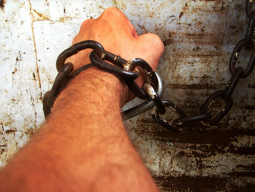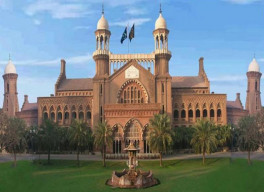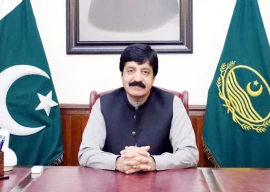
There seemed to be a significant discrepancy on some indicators in the study released on Wednesday by Annual Status of Education Report (ASER) and the figures quoted for the same indicators by a School Education Department (SED) additional secretary.
The explanation for the difference, however, is simple. According to the SED, Additional Secretary (Budget and Planning) Hassan Akhtar, had quoted updated figures.
The School Education Department had a survey, of a few indicators, conducted in October 2012. A comparison between the basic indicators (children and teacher attendance and facilities provided in schools) measured by the department – that were shared with The Express Tribune – and in the ASER shows that the findings were similar.
The overall children attendance, according to the ASER survey, is 86.4 per cent in government schools – including primary, elementary and high schools. The SED figures released in October 2012 said that the rate of children attendance in government schools stood at 88.4 percent, a difference of two per cent.
On Wednesday, while addressing the ASER launch, Akhtar had said that student attendance in government schools had increased to 92 per cent.
According to the ASER Punjab survey, teacher attendance at government schools was 87.1 per cent, which is almost the same as the percentage quoted in the SED October 2012 data: 87.2 per cent. At the Wednesday ceremony Akhtar said the teacher attendance was also 92 per cent.
When asked about the discrepancy between the government and ASER figures, SED’s Deputy Secretary Qaiser Rasheed said that Akhtar had quoted updated figures based on an independent third party survey that was carried out last year.
According to the additional secretary, over the last few months the government had worked on increasing the enrollment rate and bringing down the dropout rate. The increase in percentage, he said, was because the government had spent money on providing facilities at schools. He claimed that a million students were enrolled between 2011 and 2012 in government schools across Punjab.
The SED report said 89.4 per cent of government school across the Punjab had facilities like drinking water, electricity, toilets and boundary walls. The ASER 2012 Punjab survey has looked at the available facilities in more detail. According to the findings, more than 91 per cent of all primary, elementary and high schools have useable water facility. Between 86.8 and 94.2 per cent of the schools have toilet facilities and between 79 and 86 per cent have boundary walls. The ASER data, said Idara-e-Taleem-O-Aagahi Director (Programmes) Dr Baela Raza Jamil, is based on ‘functioning’ facilities, not just ‘available’ ones.
Additional Secretary Akhtar told The Express Tribune that almost 90 per cent of all school facilities are in working order – something that he claims the Punjab government focused on the last year.
The ASER Punjab data for 2012 states that almost 16 per cent of the children, between 6 and 16, were out of school. The SED data with The Express Tribune does not contain the figures for out of school children but the department’s Deputy Secretary Qaiser Rasheed told that The Express Tribune there are as many as 3.2 million out-of-school children, aged between 5 and 16 from a total of approximately 21.8 million. This means about 14.65 per cent of Punjab’s children are not in school. Of the total population, he claims, almost 12.5 million are enrolled in public and Punjab Education Foundation schools while another 5.9 million are enrolled in private schools.
“We are not rejecting or contesting anyone’s findings,” said Rasheed, adding, “It is very encouraging for us that the civil society is actively participating in helping us identify weak areas.” He did, however, add that there was need to review the methodology used to carry out surveys to make them compatible with standard indicators.
Published in The Express Tribune, February 2nd, 2013.

















COMMENTS
Comments are moderated and generally will be posted if they are on-topic and not abusive.
For more information, please see our Comments FAQ